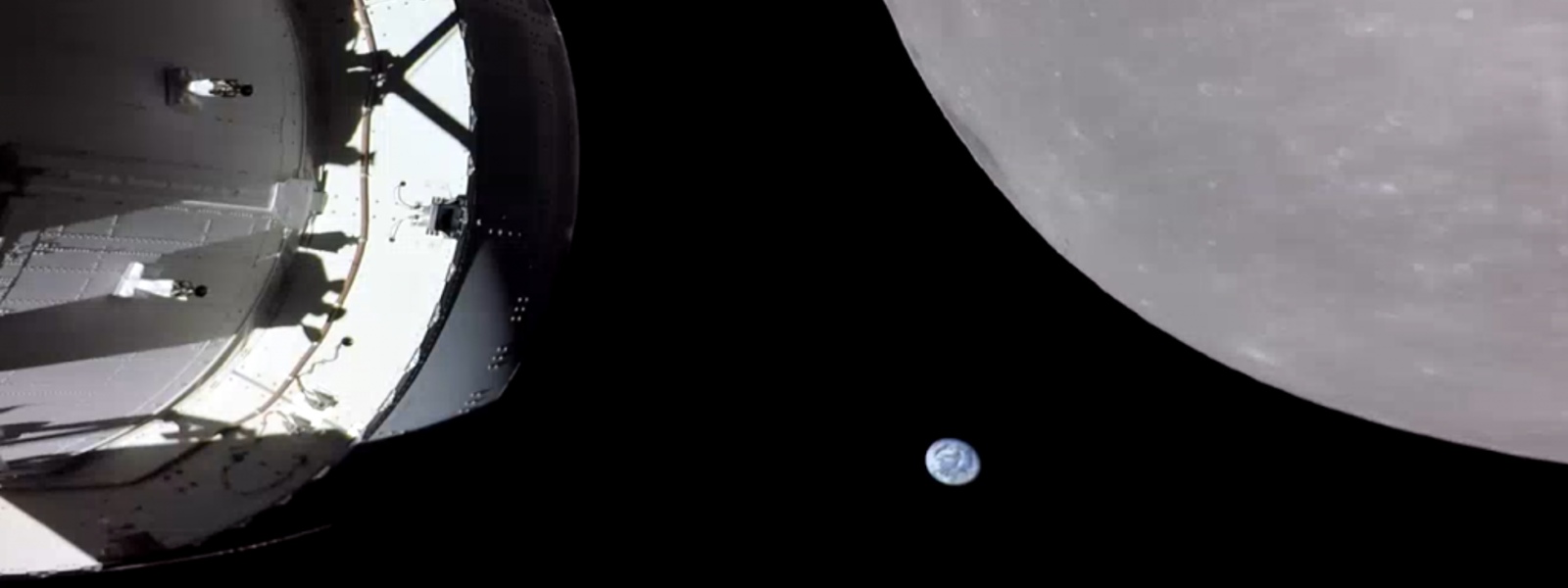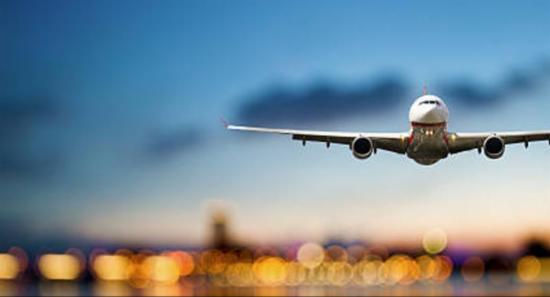.webp)

Artemis I–Orion performs Lunar flyby
COLOMBO (News 1st) - The dream of setting up a manned base on the moon edged closer to reality as NASA's Orion spacecraft, launched on board its Artemis-I rocket, completed its first flyby of the moon yesterday.
The unmanned craft will be followed by the Artemis II-Orion manned spaceship in 2024 which will travel around the moon and return without touching down. In 2025 Artemis III-Orion is scheduled to touch down on the moon with the first humans in more than 50 years to walk on the moon, the last since 1972.
On its sixth day into the Artemis I mission, Orion completed its fourth orbital trajectory correction burn using the auxiliary engines at 1:44 a.m. CST ahead of the first of two manoeuvres required to enter a distant retrograde orbit around the Moon.
The first three trajectory correction burns provided an opportunity to fire all three thruster types on Orion with the first using the large orbital manoeuvring system engine, the second using the small reaction control system thrusters, and the third using the medium-sized auxiliary engines.
Orion completed the outbound powered flyby at 6:44 a.m., passing about 81 miles above the surface at 6:57 a.m. The spacecraft's speed increased from 2,128 mph before the burn to 5,102 mph after the burn.
Shortly after the outbound flyby burn, the spacecraft passed about 1,400 miles above the Apollo 11 landing site at Tranquility Base at 7:37 a.m. Orion later flew over the Apollo 14 site at about 6,000 miles in altitude and then over the Apollo 12 site at an altitude of about 7,700 miles
“The mission continues to proceed as we had planned, and the ground systems, our operations teams, and the Orion spacecraft continue to exceed expectations, and we continue to learn along the way about this new, deep-space spacecraft,” said Mike Sarafin, Artemis I mission manager, in a Nov. 21 briefing at Johnson Space Center.
Orion will enter a distant retrograde orbit beyond the Moon on Friday, Nov. 25 with the second manoeuvre, called the distant retrograde orbit insertion burn. The orbit is “distant” in the sense that it’s at a high altitude from the surface of the Moon, and it’s “retrograde” because Orion will travel around the Moon in opposite the direction the Moon travels around Earth.
This orbit provides a highly stable orbit where little fuel is required to stay for an extended trip in deep space to put Orion’s systems to the test in an extreme environment far from Earth.
Orion will travel about 57,287 miles beyond the Moon at its farthest point from the Moon on Nov. 25, passing the record set by Apollo 14 for the farthest distance travelled by a spacecraft designed for humans at 248,655 miles from Earth on Saturday, Nov. 26, and reach its maximum distance from Earth of 268,552 miles Monday, Nov. 28.
As of Monday, Nov. 21, a total of 3,715.7 pounds of propellant has been used, 76.2 pounds less than prelaunch expected values. There are 2,112.2 pounds of margin available over what is planned for use during the mission, an increase of 201.7 pounds from prelaunch expected values.
Just after 2:45 p.m. CST on Nov. 21, Orion had travelled 216,842 miles from Earth and was 13,444 miles from the Moon, cruising at 3,489 miles per hour.
Source: NASA
Other Articles
Featured News





.png )


-752199_550x300.jpg)
-752193_550x300.jpg)


.png)








-752119_550x300.jpg)
















.gif)